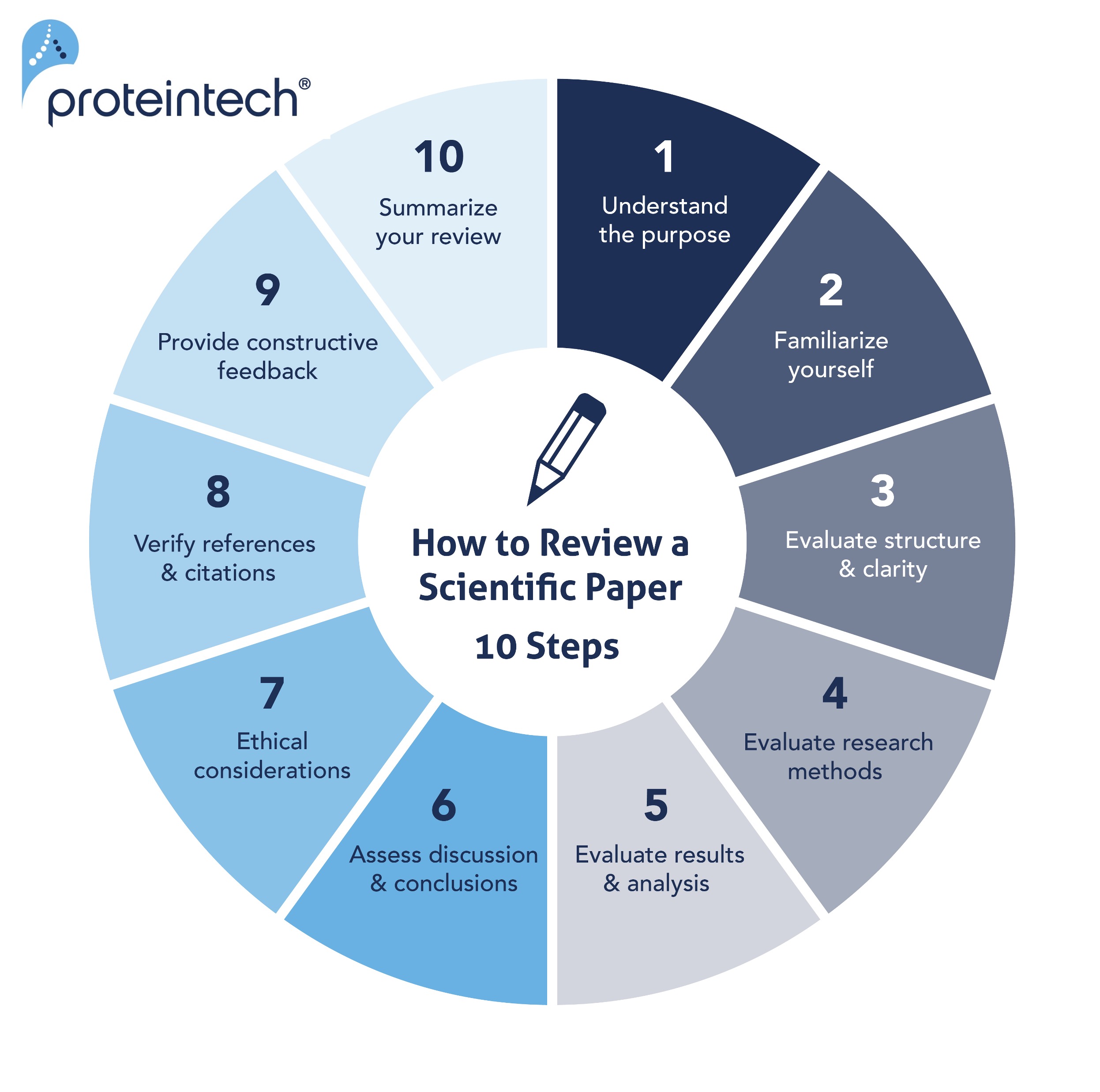How to Review a Scientific Paper in 10 Easy Steps
Summary of how to perform an invited review of a paper for publication.
Blog written by Jaime Fernández Sobaberas, 3rd year PhD student in Biochemistry at Heidelberg University, Germany.
Reviewing scientific papers is an essential part of academic research and the publication process. It allows experts to assess the quality, validity, and significance of research findings before they are disseminated to the broader scientific community. Writing a comprehensive and constructive review contributes to the overall improvement of scientific knowledge. In this blog, we will discuss the key steps and considerations involved in reviewing a scientific paper.

1. Understand the Purpose of the Review:
Before you begin the review process, it’s important to understand the purpose of the review. Ask yourself why you have been asked to review the paper and what specific aspects you should focus on. Keep in mind that the goal is to provide a fair, unbiased, and constructive critique that helps the authors improve their work.
2. Familiarize Yourself with the Paper:
Start by reading the paper thoroughly and gaining a clear understanding of its content. Take note of the research question, methodology, data analysis, results, and conclusions. Identify any areas where you have expertise or concerns.
3. Evaluate the Paper’s Structure and Clarity:
Assess the paper’s overall structure, organization, and clarity of writing. Consider whether the abstract provides a concise summary of the study and whether the introduction effectively establishes the research context. Evaluate the logical flow of ideas, the use of headings and subheadings, and the clarity of the language. Note any sections that could benefit from additional clarification or restructuring.
4. Evaluate the Research Methods:
Assess the appropriateness and rigor of the research methods employed. Evaluate the study design, sample size, data collection techniques, and statistical analyses. Check whether the methods are adequately described, allowing for replication by other researchers. Identify any potential flaws or limitations in the methodology that could affect the validity of the results. Ensure that unique identifiers have been for used all reagents; for example, catalog numbers of RRIDs for all antibodies used.
5. Evaluate the Results and Analysis:
Examine the results and analysis presented in the paper. Assess whether the data supports the research question and if the statistical analysis is appropriate. Look for any inconsistencies or gaps in the data or areas where data may have been deliberately misled. Consider the significance and implications of the results and whether they are supported by the evidence presented. Read all the supporting/supplemental resources (if available) to confirm they show enough evidence to support their main findings.
6. Assess the Discussion and Conclusions:
Evaluate the interpretation of the results in the discussion section. Consider whether the authors have provided a balanced and objective analysis of the findings. Assess the extent to which the conclusions align with the research question and the overall study objectives. Note any alternative interpretations or potential avenues for future research.
7. Consider Ethical Considerations:
While reviewing a scientific paper, it’s important to be mindful of ethical considerations. Evaluate whether the study adheres to ethical guidelines and standards, such as obtaining informed consent, maintaining participant confidentiality, and minimizing potential harm. Assess whether the study design and methods align with ethical principles, particularly when human or animal subjects are involved. If you identify any ethical concerns, highlight them in your review and suggest potential remedies or improvements.
8. Verify References and Citations:
Ensure that the references and citations provided in the paper are accurate, relevant, and up-to-date. Verify that all sources mentioned in the text are included in the reference list and vice versa. Check the quality and credibility of the references, assessing whether they are from reputable sources and contribute to the overall strength of the paper. If you notice any missing or inaccurate references, point them out in your review and suggest appropriate replacements if necessary.
9. Provide Constructive Feedback:
When writing your review, be constructive and respectful in your feedback. Clearly outline both the strengths and weaknesses of the paper, offering specific suggestions for improvement. Be specific and provide references to relevant literature to support your comments. Avoid making personal attacks or using derogatory language.
10. Summarize Your Review:
Conclude your review with a concise summary of your main points. Highlight the paper’s strengths, such as novel contributions or a well-executed methodology. Discuss the key weaknesses and areas that need improvement. Finally, provide an overall recommendation regarding the acceptance, revision, or rejection of the paper.
Reviewing a scientific paper is a critical process that contributes to the quality and integrity of scientific research. By following the steps outlined in this guide, you can provide valuable feedback to authors, help improve the quality of the research, and contribute to the advancement of scientific knowledge. Remember to approach the review process with objectivity, fairness, and a commitment to fostering scientific excellence.
Related Content
How to make a scientific conference poster
How to write a PhD thesis- 10 top tips
How to navigate finishing your PhD remotely
ChatGPT and BioGPT as tools for life science research

Support
Newsletter Signup
Stay up-to-date with our latest news and events. New to Proteintech? Get 10% off your first order when you sign up.
